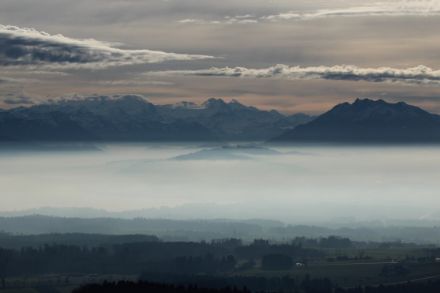Service Navigation
Search
Normally, temperatures decrease as altitude increases. In an inversion, however, the temperature in a specific layer of the lower troposphere increases with altitude. This results in the lower-altitude air layers being colder than the higher ones.

Poor air quality in an inversion
An inversion layer acts like a lid on a cooking pot and prevents the vertical exchange of air masses. This means that pollutants emitted near the ground are no longer distributed over a large volume of air and diluted, but instead accumulate within a layer of air that is usually only a few hundred metres thick.

Air quality is particularly poor in high-pressure conditions where the inversion drops well below 1,000 metres. If this weather situation lasts for several weeks, the pollution (especially fine particulate matter, PM10) can reach extreme levels. It is also interesting to note that particulate pollution can rise to high levels in weather situations with strong inversions and little fog or low stratus. In this situation, the solar radiation triggers photochemical processes that further increase the pollution load.
Unlike high ozone levels in summer, pollution is limited to low altitudes. Above the inversion, the air is not only dry and mild, but also very clean.
Air quality data
Data on air quality are available from the cantonal environmental offices. MeteoSwiss produces inversion forecasts for some cantons for the six winter months. For Central and Eastern Switzerland, these forecasts for the period from 1 November to 31 March are available at Ostluft.